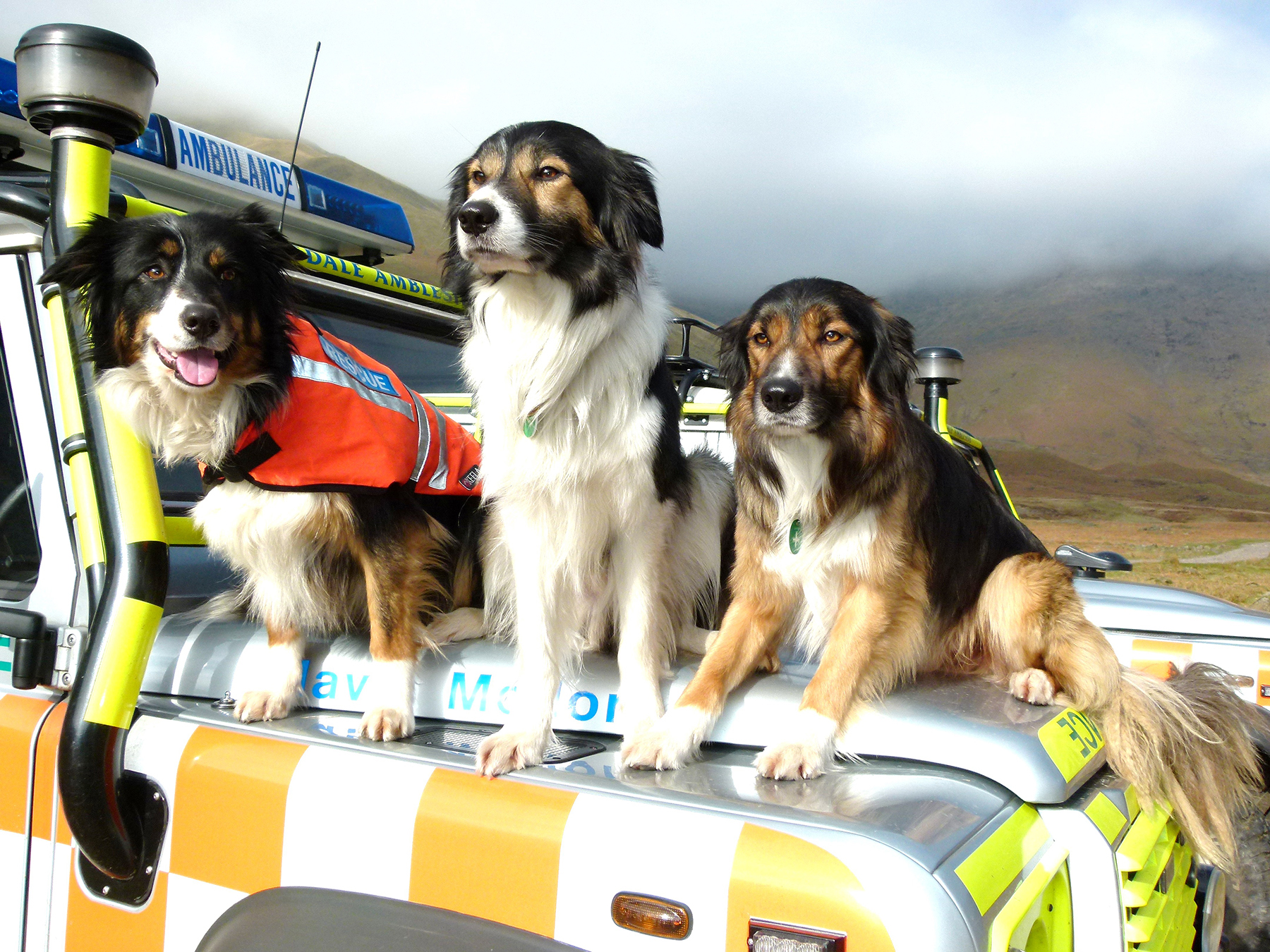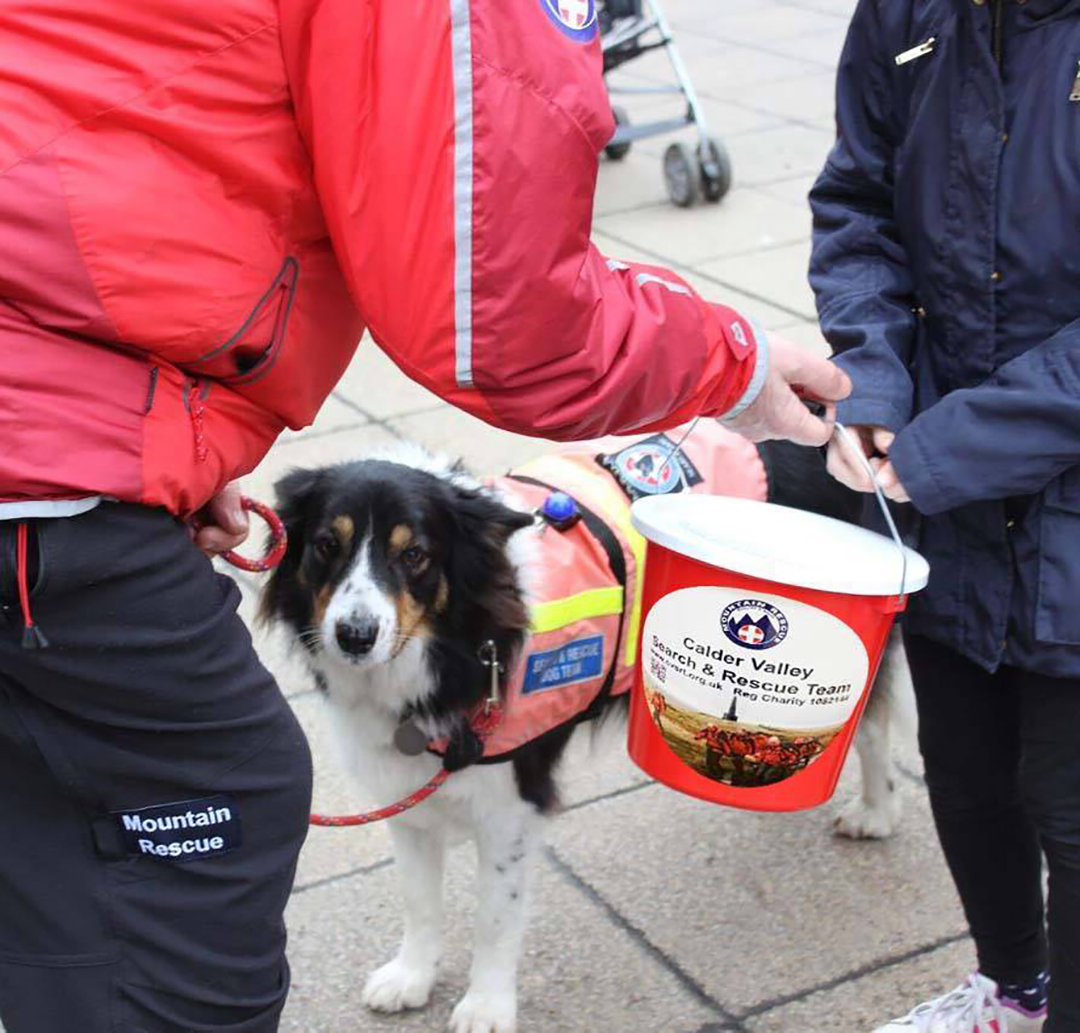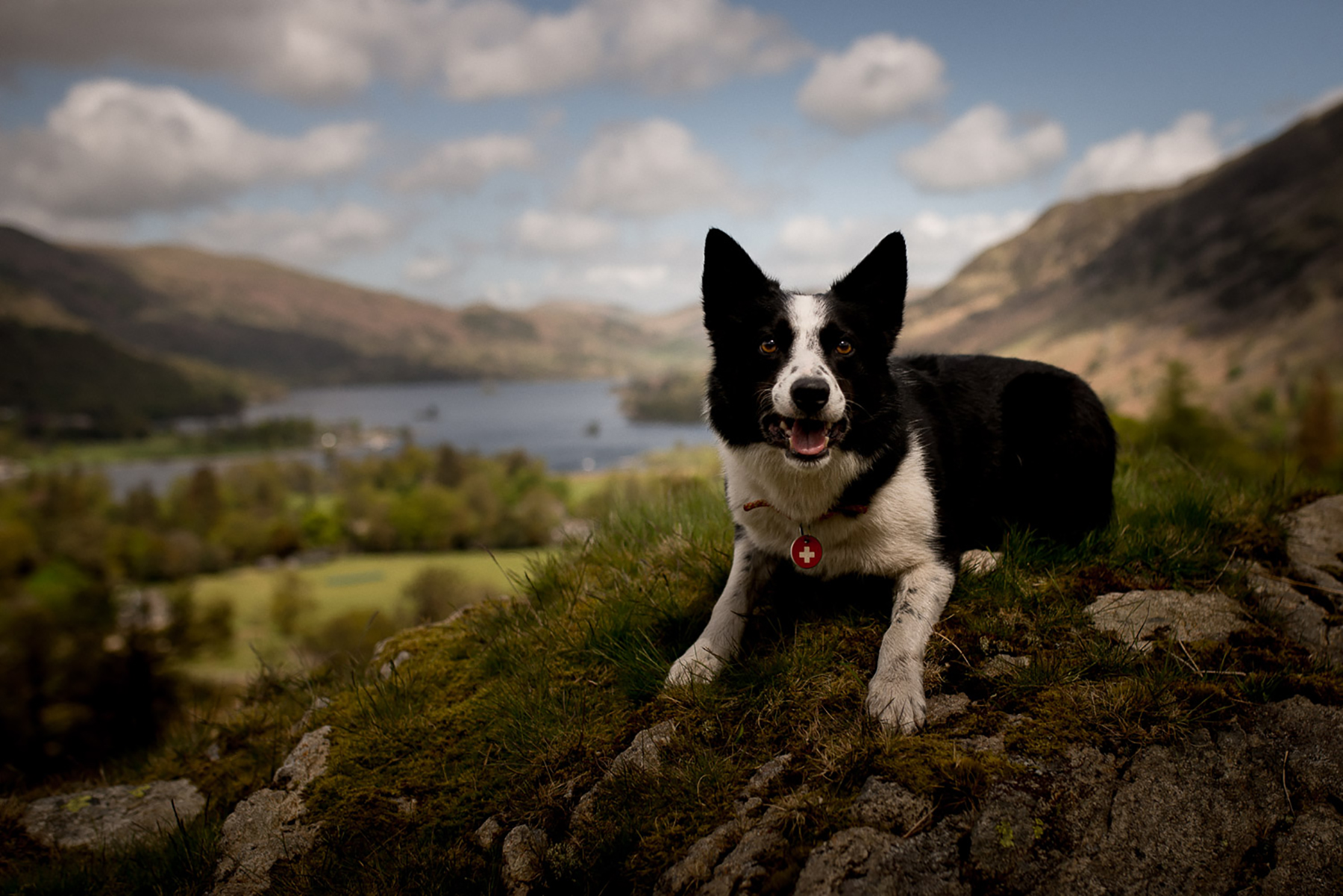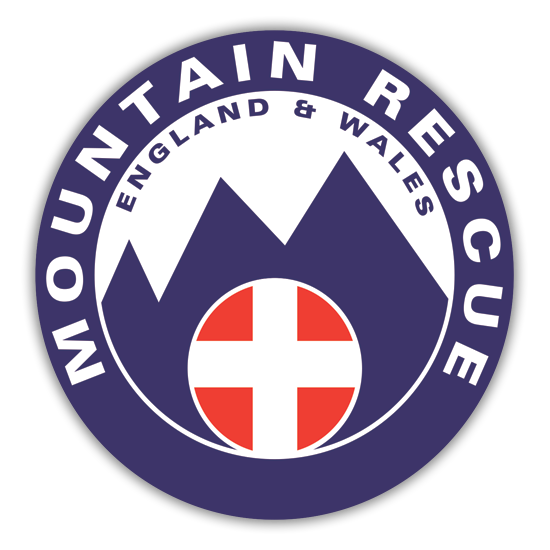From tins and texts…
… to photogenic dogs and donate buttons, raising funds for mountain rescue
Just before the Second World War, when the first green shoots of a more organised mountain rescue service began nosing their way into sunlight, things were very much hand-to-mouth. Rescue parties used their own climbing and mountaineering equipment, uprooted gate posts and five-barred gates or fashioned knotted rope into stretchers, relayed hot water bottles up the hill to treat hypothermic casualties and requisitioned coal wagons as makeshift ambulances.
It was a service driven by the enthusiasm and determination of those who turned out to rescues, pitching in with whatever they could, all contributions gratefully received. Donations came in from the climbing clubs, the families of the deceased or the survivors themselves, local outdoor retailers and manufacturers but, arguably, the biggest donors were the rescue team members themselves, dipping into their own pockets, using their own resources to save lives.
And, in some respects, little has changed. Teams may now benefit from ‘technical’ kit, badged-up waterproofs and liveried blues and twos, and some (by no means all) may now operate from purpose-built bases – and recent years have seen mountain rescue benefit from Libor grants and the generosity of some key sponsors – but team members still put their hands in their own pockets to support their commitment to mountain rescue and still spend a great deal of time fundraising. Just to keep on keeping on. Still driven. Still dedicated.
Somewhere along the way, fundraising became ‘charitable giving’ and the competition for the pound in your pocket got considerably stiffer. In March 2018, the Charity Commission reported 167,972 charities on the books. Two years ago, with the figure lower, the Charities Aid Foundation (CAF) had raised concerns that people were becoming ‘charity fatigued’.
Even before that, fearful of falling donations and the rising cost of just about everything, teams had begun exploring the frankly bewildering number of ways now available to fundraise, focusing increasingly on the digital.
Yet, according to the 2018 CAF UK overview, cash remains the main way people give – although the level decreased slightly in 2017. And the number of people who gave to charity either via donations or sponsoring someone (another key area for mountain rescue), also decreased.

So where are we now?
Collecting tins remain a staple for charity fundraising in general. History hasn’t recorded with absolute certainty when the first such tin found its way into mountain rescue hands but you’ll find them liberally scattered around ‘team patches’, patiently awaiting your attention – on the counter when you shop, at the bar when you drink, inside the tourist information centre and outside the local supermarket. The latter more than likely attached to a smiling rescue team member and never very far from an extremely photogenic search dog.

According to the Showcase of Fundraising Innovation and Inspiration (SOFII), the original collecting tin was ‘placed outside the first temple of Jerusalem’ so the passing faithful could easily make donations towards the temple’s upkeep. Possibly as long ago a 900 years BC.
In his 1666 diary, Samuel Pepys describes ‘walking home whilst being swamped with charity collectors, all shaking their tins to raise money for victims of the Great Fire of London’ and, in 1891, ‘the RNLI raised £600 from the first ever street collection’.
A well-placed tin (complete with smiling rescuer and photogenic dog), can quickly fill over a busy weekend, in a mountaineering ‘hotspot’, but will often involve an entire team or support group undertaking fundraising relays in between the call-outs. So, on the one hand, it’s a great opportunity to chat about the work and raise awareness, but it’s a labour-intensive exercise for teams already struggling with the volume of call-outs.

Thankfully, mountain rescue still hits the spot when it comes to motivating factors. When CAF asked a sample of 700 charity donors, in 2013, what made them keep on giving, 75% cited their ‘belief in a specific cause’ as the most important factor, 61% pointed to a personal experience having driven their giving, and more than 50% said their support comes from the belief that charities cannot do enough alone.

If you do want to give – whether that desire is driven by personal experience of mountain rescue or just admiration for its voluntary ethic – the chances are you’ll already know which team you wish to support.
But, just in case, here’s what to do.
Search them out on Facebook. They’re a friendly bunch and always keen to chat. And many of them now have a ‘Donate’ button right there, on their Facebook page.
Or check out their website. Ditto the ‘Donate’ button.
Or, if you fancy something a little more challenging then why not do just that: challenge yourself. Organise a fundraising event in their name – or join one of theirs and ask people to sponsor you.
Or sort out a legacy. Some teams also run textgiving campaigns and others have signed up for AmazonSmile (more about that in a moment). And there’s still that faithful old friend, the collecting tin.
And if you want to support all 48 rescue teams through the national organisation (that’s us, by the way, Mountain Rescue England and Wales), all of the above applies too.
Money donated to us goes towards training in specific disciplines such as casualty care, response driving and technical rope skills, as well as the perhaps less-sexy but definitely essential things like insurance, certain items of equipment and the publication of Mountain Rescue magazine. Things which all team members – and the casualties – benefit from.
You can donate online, leave a gift in your will, set yourself a challenge in our name, or simply text RESQ41 and the amount you wish to give to 70070.
You could also shop online through AmazonSmile and, every time you do, Amazon will donate 0.5% of the purchase price (on certain purchases, excluding shipping costs, returns and VAT) to us. Might not sound much but it all adds up and it’s easy.
If you already have an Amazon account, just go to smile.amazon.co.uk, log in, choose your charity from the drop down menu then start spending. Currently, alongside us, six English and five Welsh teams have registered.
No doubt, the elves of digital giving will continue to devise ever more ways you can give but, in the meantime, on behalf of mountain rescue team members across England and Wales – and our photogenic dogs* – thank you.
We couldn’t do it without you.
* As you might imagine, every one of our search dogs is extremely photogenic. Unfortunately, we only had room for a few here, but you can always pop to their respective Facebook pages – just be sure you come back to us eventually!

[…] You could take a look at one of our earlier blogs to find out more about how teams go about raising funds. […]